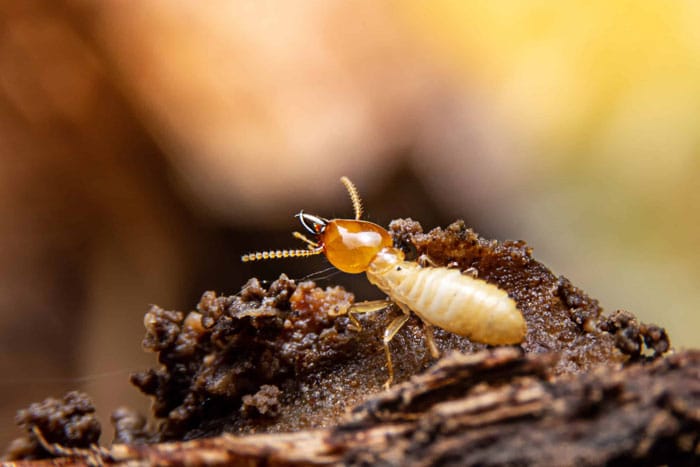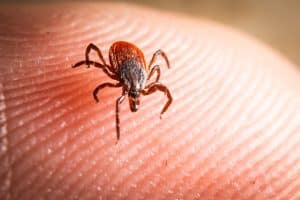Termites cause over $5 billion in property damage annually in the United States. They are a big worry for homeowners. Finding out your house has termites can be scary. But, acting fast can stop more damage.
A reliable pest control expert is key. They check the damage and start the right treatment to save your home.
Key Takeaways
- Termite damage can lead to significant financial losses if left unchecked.
- Prompt identification and treatment are critical in minimizing damage.
- Pest control professionals are essential in assessing and treating termite infestations.
- Effective treatment plans can help save a house from further termite damage.
- Homeowners should be vigilant in monitoring for signs of termite activity.
Understanding Termite Infestations
It's important for homeowners to know about termite infestations. These pests can cause a lot of damage to a house. This damage can lead to expensive repairs.
Signs of Termite Damage
Spotting termite damage early is key. Here are some signs to look out for:
- Buckling ceilings or walls: Termite damage can make ceilings and walls warp or buckle.
- Appearance of water damage: Termites can create tunnels that look like water damage.
- Maze-like designs in wooden structures: Termites eat wood, leaving behind complex patterns.
- Mud tunnels on home foundations: Subterranean termites build mud tunnels to travel between their colonies and food.
- Swarm of termites: Seeing a swarm of termites, often in spring, means there's a big colony nearby.
Types of Termites in the United States
There are about 45 active termite species in the U.S. Here are the most common ones:
- Subterranean termites: These termites live underground and use mud tunnels to get to food.
- Drywood termites: Drywood termites infest dry wood and don't need soil to survive.
- Formosan termites: Formosan termites are aggressive subterranean termites that can cause a lot of damage.
Knowing about different termites and their habits helps with managing and treating them.
Can a House with Termites Be Saved?
Early detection and effective treatment are key to saving a house with termites. Homeowners should quickly get professional help if they suspect termites. This will help assess the situation and find the best solution.
Professional Termite Inspection Process
A professional termite inspection checks a property for termites, damage, and entry points. Inspectors use special tools and methods to find termites. They look for mud tubes and termite nests, and use moisture meters.
- Examining the foundation, walls, and roof for signs of termite damage
- Checking for mud tubes and termite nests
- Using specialized equipment to detect termite activity
Effective Termite Treatment Options
When termites are found, several treatments can be used. The choice depends on the type of termite and how bad the infestation is. Common treatments include:
- Liquid Termiticides: Applied around the house to keep termites out.
- Whole-House Treatments: The house is tented and a gas termiticide is used to kill termites.
- Localized Treatments: Treatments for specific areas with termite activity.
Termite Damage Repair Methods
After termites are gone, fixing damaged areas is important. This helps keep the house strong. Repair methods include:
- Replacing damaged wood with treated lumber
- Reinforcing damaged structures with additional support
- Treating remaining wood with termiticide to prevent future infestations
Cost Considerations for Treatment and Repair
The cost of treating and repairing termite damage varies. It depends on the infestation, treatment needed, and repair costs. Costs include:
- Inspection and treatment costs
- Repair and replacement of damaged materials
- Ongoing monitoring and maintenance to prevent future infestations
Knowing these costs helps homeowners make smart choices about their termite-infested house.
Conclusion: Preventing Future Termite Infestations
Stopping termites is key to saving your house and avoiding expensive fixes. Homeowners can protect their homes by reducing wood contact with the ground and fixing moisture issues.
Regular checks are vital to catch termites early. This means quick treatment and less damage. Keeping your home termite-free helps it last longer.
Good prevention needs regular upkeep, like cleaning up debris and making sure drainage works. These steps help lower termite risks and protect your home's value.
Contact Urban Desert Pest Control today for expert termite control services in the Phoenix area!
FAQ
What are the signs of termite infestation?
Signs of termites include mud tubes on walls and discarded wings. You might also see damaged wood. Look for sagging floors or ceilings, and doors that are hard to open or close.
Can a house with termites be saved?
Yes, a house with termites can be saved. Quick treatment and repair are key. The damage's extent and treatment success will decide.
What are the different types of termite treatment options?
Treatment options are liquid termiticides, baiting systems, and fumigation. The right choice depends on the infestation's severity and termite type.
How much does termite damage repair cost?
Repair costs vary by damage extent and materials needed. Expect to pay 0 to ,000 or more.
How can I prevent future termite infestations?
To prevent termites, reduce wood-to-ground contact and minimize moisture. Regular inspections with a pest control pro are also key.
What is the importance of a professional termite inspection?
A professional termite inspection is vital. It catches activity early, allowing for quick treatment and less damage. Inspectors can spot infestations and suggest treatments.
Are there any DIY methods for termite control?
DIY methods for termites are often not effective. They might not solve the problem. It's best to hire a pest control pro for real solutions.
How often should I inspect my home for termites?
Inspect your home for termites at least once a year. If you live in a high-risk area, do it more often.












